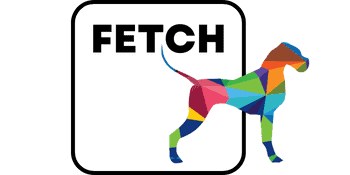
Why your organic social media efforts need paid media support
Reading Time: 4 minutesIn the ever-evolving digital landscape, the importance of a robust social media presence cannot be overstated. As a marketing professional or business owner, you likely understand the value of organic social media efforts. However, to truly harness the power of social media, integrating a paid media budget into your strategy is essential. This blog explores why paid media is crucial for complementing organic social media posting, and offers best practice tips for getting started and assessing performance.
The limitations of organic social media
Organic social media efforts involve creating and sharing content on social platforms without paid promotion. While this approach can build a loyal following and foster engagement, today it has several limitations:
Declining Organic Reach:
Social media platforms, particularly Facebook and Instagram, have seen a significant decline in organic reach over the years. Algorithms now prioritise content from personal connections over brand pages, making it harder for businesses to reach their audience without paid support.
Saturated Market:
With millions of businesses vying for attention on social media, standing out organically is increasingly challenging. Paid media helps cut through the noise and ensures your content can reach more of your target audience.
Limited Analytics:
While organic posts provide some insights, they often lack the depth of data and analytics available through paid campaigns. This data is crucial for optimising your strategy and analysing return on investment.
The benefits of paid media
Integrating paid media into your social strategy offers numerous advantages that will complement your organic efforts:
Increased Reach and Visibility:
Paid media allows you to reach a wider audience beyond your existing followers. With targeted advertising, you can ensure your content reaches people who are most likely to be interested in your products or services.
Targeted Advertising:
Platforms like Facebook, Instagram, and LinkedIn offer sophisticated targeting options, allowing you to reach specific demographics, interests, and behaviours. This precision ensures your content is seen by those who matter most to your business.
Enhanced Analytics and Insights:
Paid media campaigns come with comprehensive analytics tools, providing detailed insights into ad performance. This data helps you understand what works, refine your strategy, and optimise future campaigns for better results.
Cost-Effective:
Paid media can be more cost-effective than traditional advertising methods. With the ability to set budgets and bid strategies, you can control your spending and achieve a high return on investment.
Getting started with paid media
To maximise the benefits of paid media, it’s crucial to approach it strategically. Here are some of our top tips to help you get started:
Define Clear Objectives:
Before launching any paid campaign, define your objectives. Are you looking to increase brand awareness, drive website traffic, generate leads, or boost sales? Clear objectives will guide your campaign strategy and help measure success.
Know Your Audience:
Understanding your audience is key to effective targeting. Use insights from your organic efforts and market research to create detailed audience profiles. Leverage platform-specific targeting options to reach these segments precisely.
Choose the Right Platforms:
Not all social media platforms are created equal. Choose platforms that align with your business goals and where your target audience is most active. For instance, Instagram and Facebook are great for B2C brands, while LinkedIn is ideal for B2B marketing.
Create Compelling Content:
Your ads need to stand out and grab attention. Invest in high-quality visuals and compelling copy that resonate with your target audience. Test different ad formats, such as videos, carousel ads, and stories, to see what works best.
Set a Realistic Budget:
Start with a modest budget and gradually scale up as you gain insights and see results. Monitor your spending closely and adjust your budget based on performance. Remember, paid media is an investment that should yield measurable returns.
Utilise A/B Testing:
A/B testing, or split testing, involves running multiple versions of an ad to see which performs better. Test different headlines, images, calls-to-action, and targeting options to optimise your campaigns continuously.
Assessing performance and optimising campaigns
Effective paid media campaigns require ongoing monitoring and optimisation. Here’s how to assess performance and make data-driven decisions:
Track Key Metrics:
Monitor key performance indicators (KPIs) such as click-through rates (CTR), conversion rates, cost per click (CPC), and return on ad spend (ROAS). These metrics provide insights into how well your campaigns are performing and where improvements are needed.
Analyse Audience Behaviour:
Use analytics tools to understand how your audience is interacting with the content your paid media budget is supporting. Look for patterns in engagement, demographics, and behaviour to refine your targeting and content strategy.
Adjust Your Strategy:
Based on your analysis, make data-driven adjustments to your campaigns. This could involve changing creatives, modifying targeting options, or reallocating budget to better-performing content.
Use Retargeting:
Retargeting involves showing content to people who have previously interacted with your brand. This technique helps re-engage potential customers and increase conversion rates. Set up retargeting campaigns to reach users who visited your website, engaged with your content, or abandoned their shopping carts.
Leverage Lookalike Audiences:
Lookalike audiences are groups of people who share similar characteristics with your existing customers. Use this feature to expand your reach and find new potential customers who are likely to be interested in your products or services.
Regularly Review and Report:
Schedule regular reviews of your campaign performance. Create detailed reports that highlight successes, challenges, and opportunities for improvement. Share these insights with your team and stakeholders to keep everyone aligned and informed.
And finally…
While organic social media efforts are vital for building a strong brand presence and engaging with your audience, paid media is essential for amplifying your reach and achieving your marketing goals more quickly. By integrating a paid media budget into your social strategy, you can overcome the limitations of organic posting, leverage advanced targeting options, gain valuable insights into your audience’s behaviour, and drive significant results for your business.
Need help with your social media strategy, implementation and management, contact us today.
Post a Comment
You must be logged in to post a comment.






